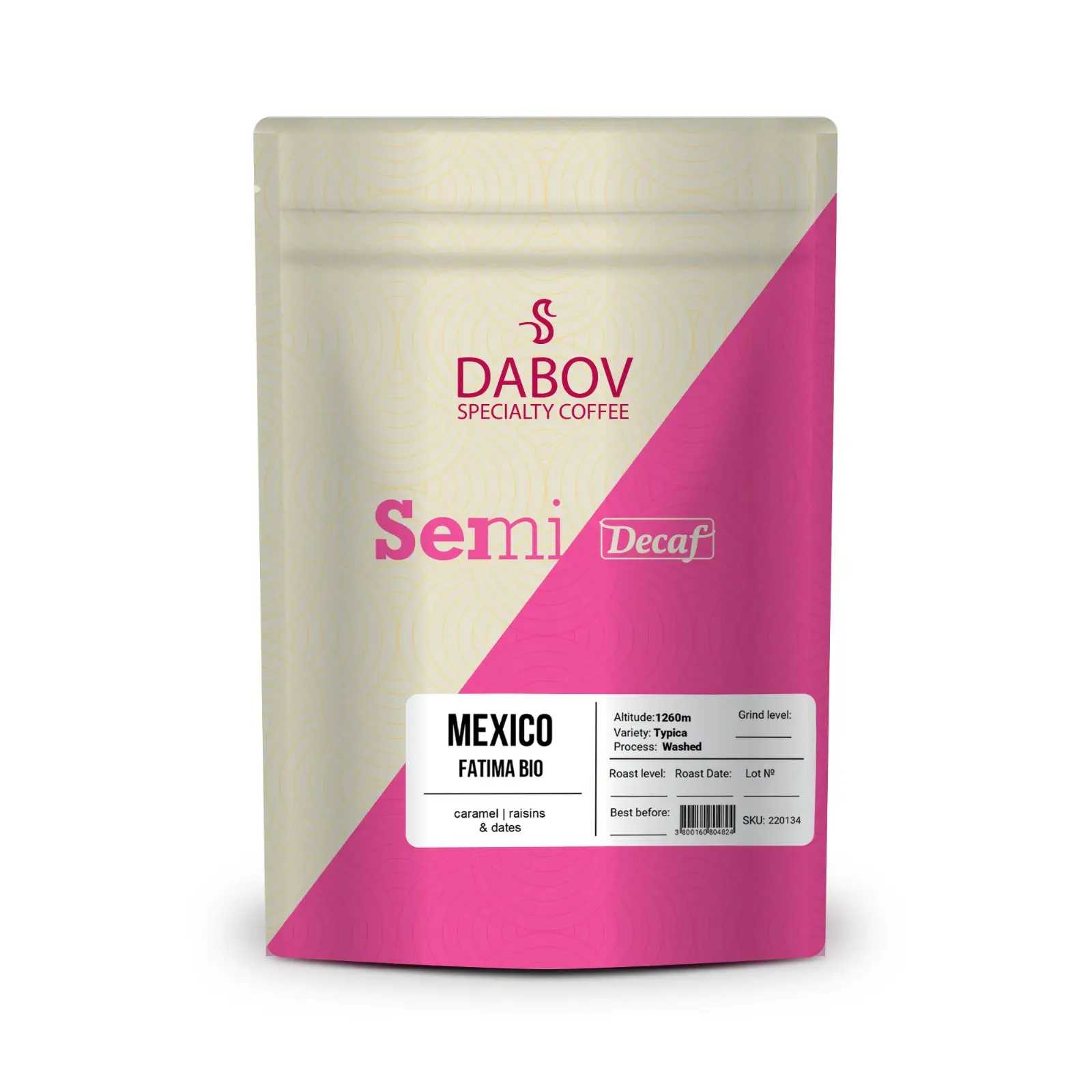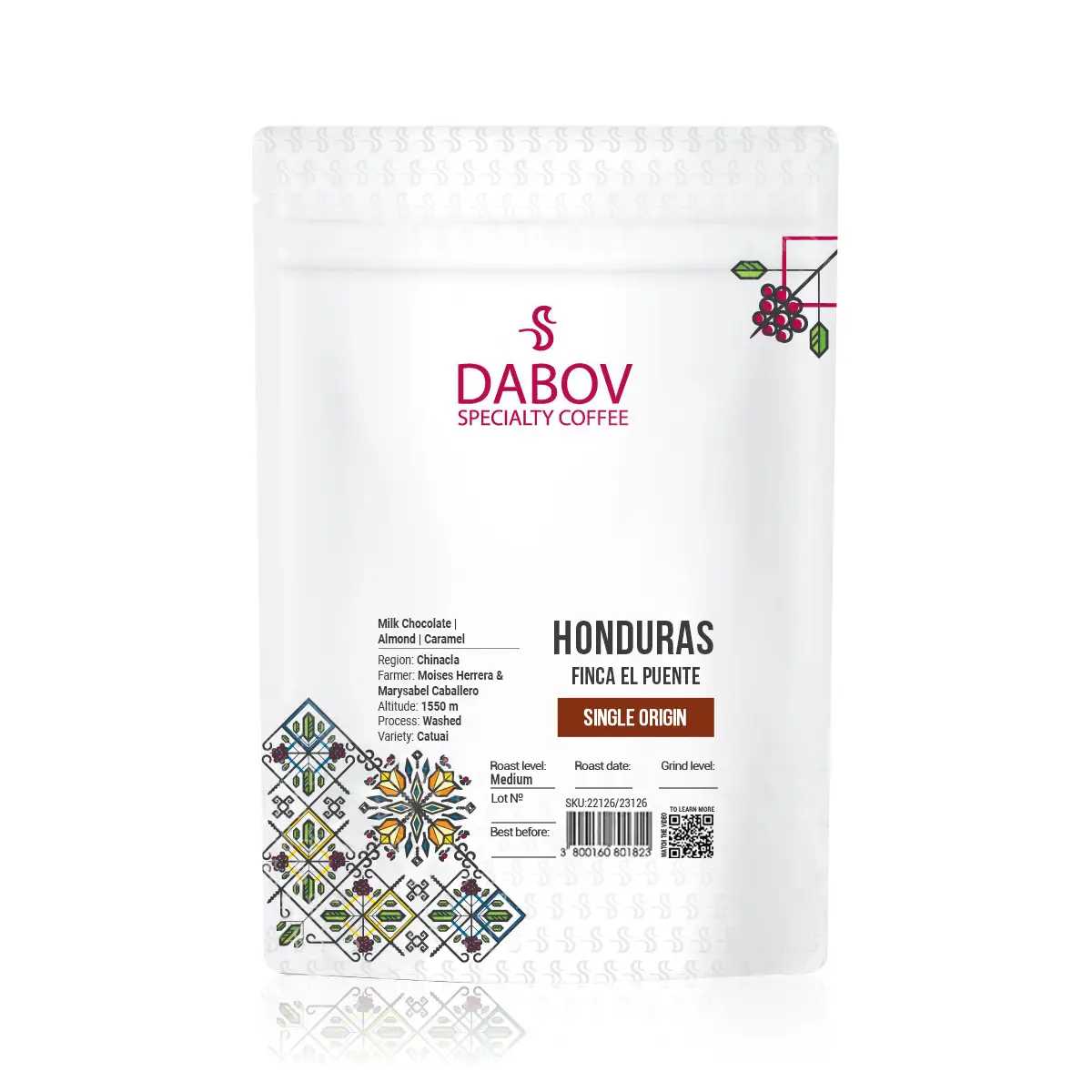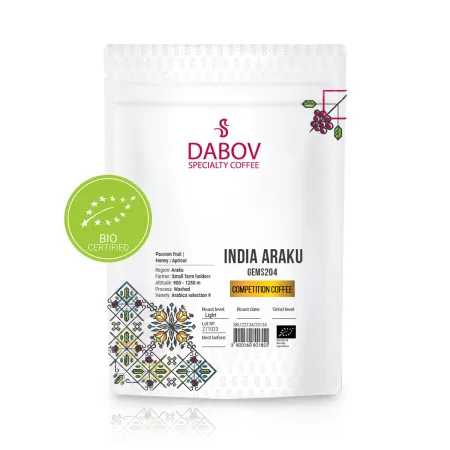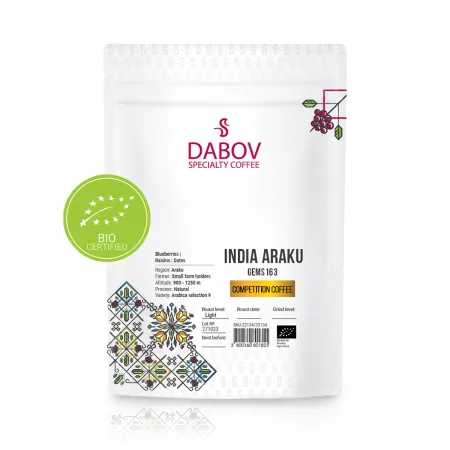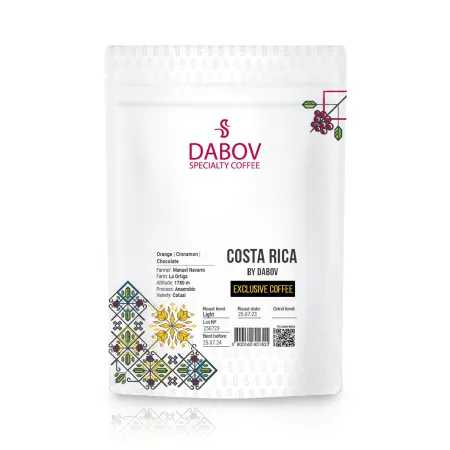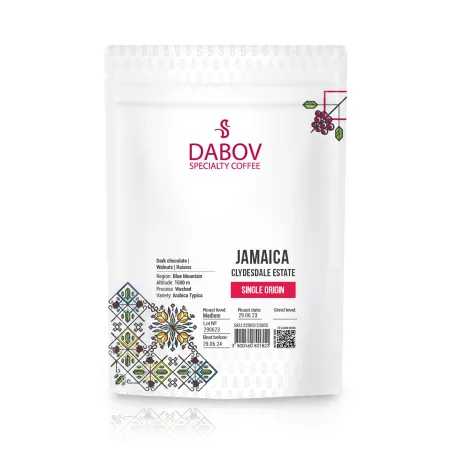The Economics of Coffee From Planting to Profits
Explore the intricate world of coffee economics—where cultivation meets commerce. This article delves into the lifecycle of coffee, from planting to profits, revealing its pivotal role in the global economy. Learn the stages of the coffee supply chain, factors influencing prices, and how cooperatives and technology reshape profitability. Uncover essential farming practices with our coffee planting guide, analyze current market trends, and discover business models that can drive success in the coffee industry. Join us on this journey through the rich landscape of coffee, and understand its economic impact on communities worldwide.
Introduction
Coffee, the aromatic elixir that fuels millions of people worldwide, is not just a beloved beverage but also a powerful economic force. As one of the leading agricultural exports globally, coffee plays a pivotal role in shaping economies, particularly in developing countries. The coffee industry's impact reverberates through various sectors, from agriculture and logistics to retail and hospitality, creating a complex web of economic interactions that span continents.
Coffee economics, a specialized field within agricultural economics, delves into the intricate market dynamics that govern the journey of coffee from seed to cup. This discipline encompasses a wide range of factors, including production costs, market demand, environmental influences, and global trade policies. Understanding coffee economics is crucial for stakeholders at every level of the supply chain, from small-scale farmers in the highlands of Ethiopia to multinational corporations headquartered in bustling metropolises.
In this comprehensive exploration of coffee economics, we will unravel the complexities of the coffee supply chain, examine the factors that influence coffee prices, and provide insights into maximizing profits for coffee farmers and businesses alike. By the end of this journey, you'll have gained a deep understanding of the economic forces that shape your daily brew and the global industry surrounding it.
1. Understanding Coffee Economics
A. The Coffee Supply Chain
The coffee supply chain is a intricate network that connects farmers, processors, exporters, importers, roasters, and retailers. Each stage of this chain adds value to the coffee and influences its final price and quality. Let's break down the key components:
- Coffee Cultivation: This is where it all begins. Farmers in tropical and subtropical regions cultivate coffee plants, carefully tending to them for several years before they begin producing cherries. The cultivation process involves selecting appropriate varieties, preparing the land, planting seedlings, and managing the crop through its growth cycle.
- Harvesting: Once coffee cherries reach peak ripeness, they are harvested. This can be done manually, which is labor-intensive but allows for selective picking of only the ripest cherries, or mechanically, which is faster but less selective.
- Processing: After harvesting, coffee cherries undergo processing to remove the pulp and extract the beans. This can be done through wet processing (washed coffee) or dry processing (natural coffee), each method imparting different flavors to the final product.
- Drying and Milling: Processed coffee beans are dried to reduce moisture content and then milled to remove any remaining layers of parchment, resulting in green coffee beans ready for export.
- Exporting and Importing: Green coffee beans are graded, packed, and shipped to importing countries. This stage involves complex logistics and is subject to various trade regulations and tariffs.
- Roasting: Importers or specialized coffee roasters then roast the green beans, transforming them into the aromatic brown beans we're familiar with. Roasting is a critical step that significantly influences the coffee's flavor profile.
- Distribution and Retail: Finally, roasted coffee is packaged and distributed to various retail outlets, cafes, and direct-to-consumer channels.
Each stage of this supply chain adds costs and value to the coffee, contributing to its final market price. Understanding these stages is crucial for anyone looking to enter or optimize their position within the coffee industry.
B. Economic Factors Influencing Coffee Prices
Coffee prices are notoriously volatile, influenced by a myriad of factors that can change rapidly. Some of the key economic factors include:
- Supply and Demand: Like any commodity, coffee prices are fundamentally driven by supply and demand dynamics. Overproduction can lead to price crashes, while shortages can cause prices to soar. For instance, the coffee price crisis of the early 2000s was largely due to oversupply, causing severe economic hardship for many coffee-producing countries.
- Weather and Climate: Coffee plants are sensitive to environmental conditions. Frost, drought, or excessive rainfall can significantly impact crop yields. Climate change is increasingly becoming a major concern, potentially altering traditional coffee-growing regions and affecting long-term supply.
- Geopolitical Events: Political instability in coffee-producing countries can disrupt supply chains and impact prices. Trade policies, such as tariffs or export quotas, can also influence global coffee markets.
- Currency Exchange Rates: As coffee is typically traded in US dollars, fluctuations in exchange rates can affect the purchasing power of coffee-importing countries and the profitability of exports for producing countries.
- Speculation: Coffee futures are traded on commodity exchanges, and speculative activity by traders can lead to short-term price volatility.
- Production Costs: Increases in labor costs, fertilizer prices, or energy costs can push up the overall cost of coffee production, potentially leading to higher market prices.
- Consumer Trends: Shifts in consumer preferences, such as the growing demand for specialty and sustainably sourced coffee, can influence price premiums for certain types of coffee.
Understanding these factors is crucial for coffee industry stakeholders to make informed decisions and develop effective strategies to navigate market fluctuations.
C. Role of Coffee Cooperatives
Coffee cooperatives play a vital role in the economics of coffee, particularly for small-scale farmers. These organizations are formed by groups of farmers who pool their resources and work together to improve their economic position. The impact of cooperatives on coffee economics is multifaceted:
- Market Access: Cooperatives provide small farmers with access to larger markets that they might not be able to reach individually. By aggregating production from multiple farmers, cooperatives can negotiate better prices and secure contracts with larger buyers.
- Economies of Scale: By working together, farmers can achieve economies of scale in various aspects of production and processing. This includes sharing the costs of equipment, transportation, and certification processes.
- Quality Improvement: Many cooperatives provide training and resources to help farmers improve their cultivation practices, leading to higher quality coffee that can command better prices in the market.
- Financial Services: Cooperatives often offer financial services to their members, such as access to credit, savings programs, and crop insurance. This financial support can be crucial for farmers to invest in their farms and manage risk.
- Sustainable Practices: Cooperatives are often at the forefront of promoting sustainable farming practices. They can help farmers obtain certifications like Fair Trade or Organic, which can lead to price premiums and more stable market relationships.
- Social Impact: Beyond economic benefits, cooperatives often invest in community development projects, such as building schools or healthcare facilities, which can have long-term positive impacts on coffee-growing regions.
- Bargaining Power: By representing a larger group of farmers, cooperatives have more bargaining power in negotiations with buyers, potentially leading to fairer prices and better terms for farmers.
The success of coffee cooperatives has been demonstrated in various regions. For example, the Oromia Coffee Farmers Cooperative Union in Ethiopia, which represents over 300 primary cooperatives and more than 350,000 farmer members, has significantly improved the livelihoods of its members through better market access and community development programs.
However, it's important to note that the effectiveness of cooperatives can vary depending on factors such as management quality, market conditions, and government policies. Successful cooperatives require strong leadership, transparent governance, and a commitment to member education and participation.
2. Coffee Farming: From Planting to Harvest
A. Coffee Planting Guide
Successful coffee farming begins with proper planting techniques. Here's a detailed guide to help farmers start their coffee journey on the right foot:
- Selecting Coffee Varieties: The choice of coffee variety is crucial and depends on factors such as climate, altitude, soil type, and market demand. Common varieties include Arabica (known for its superior flavor but more susceptible to disease) and Robusta (hardier but generally considered less flavorful). Within these species, there are numerous cultivars with different characteristics. For example, the Gesha variety, originally from Ethiopia but now famous in Panama, commands premium prices for its unique floral and tea-like flavors.
- Land Preparation: Proper land preparation is essential for healthy coffee plants. This involves:
- Soil Testing: Analyze soil pH (ideally between 6.0 and 6.5 for Arabica) and nutrient content.
- Clearing: Remove existing vegetation, taking care to preserve beneficial shade trees if practicing shade-grown coffee cultivation.
- Terracing: On sloped land, create terraces to prevent erosion and improve water retention.
- Soil Amendment: Based on soil test results, add organic matter or specific nutrients as needed.
- Planting Techniques:
- Spacing: Typical spacing is about 2-3 meters between plants and 3-4 meters between rows, but this can vary based on variety and cultivation method.
- Hole Preparation: Dig holes about 40-50 cm deep and wide. Mix the topsoil with organic matter before refilling.
- Planting: Place seedlings carefully, ensuring the root collar is at ground level. Gently firm the soil around the plant.
- Mulching: Apply organic mulch around the base of the plant to retain moisture and suppress weeds.
- Timing: Plant at the beginning of the rainy season to ensure adequate water for establishment. In regions with two rainy seasons, the shorter season is often preferred for planting.
- Seedling Care: Use healthy, disease-free seedlings from reputable nurseries. Some farmers prefer to start their own nurseries to have more control over seedling quality and to reduce costs.
- Shade Management: For shade-grown coffee, carefully plan the integration of shade trees. Common shade trees include legumes like Inga species, which also help fix nitrogen in the soil.
- Water Management: Install irrigation systems if necessary, especially in areas with unpredictable rainfall patterns. Drip irrigation is often the most efficient method for coffee plantations.
By following these guidelines and adapting them to local conditions, coffee farmers can establish a strong foundation for their coffee plantation, setting the stage for healthy plants and high-quality yields in the years to come.
B. Optimal Growing Conditions
Coffee plants thrive under specific environmental conditions, and understanding these factors is crucial for maximizing yield and quality. Here's an in-depth look at the optimal growing conditions for coffee:
- Climate: Coffee plants prefer a tropical or subtropical climate with distinct wet and dry seasons. The ideal temperature range is between 60°F to 70°F (15°C to 21°C) for Arabica and slightly higher for Robusta. Extreme temperatures, especially frost, can severely damage coffee plants.
- Altitude: Altitude plays a significant role in coffee quality, particularly for Arabica. Higher altitudes generally produce denser, more flavorful beans due to slower maturation. Optimal altitudes vary:
- Arabica: 3,000-6,000 feet (900-1,800 meters) above sea level
- Robusta: 0-3,000 feet (0-900 meters) above sea level
- Rainfall: Coffee plants require about 60-80 inches (1,500-2,000 mm) of rainfall annually, ideally distributed evenly throughout the year. A short dry period is beneficial for flowering and bean development.
- Soil Quality: Coffee thrives in well-draining, slightly acidic soils (pH 6.0-6.5). The soil should be rich in organic matter and key nutrients like nitrogen, phosphorus, and potassium. Volcanic soils, common in many coffee-growing regions, are particularly suitable due to their mineral content and drainage properties.
- Sunlight: While coffee plants can grow in full sun, shade-grown coffee is often of higher quality. Shade trees protect coffee plants from extreme temperatures, reduce water stress, and can contribute to soil health.
- Wind Protection: Strong winds can damage coffee plants and increase water loss. Windbreaks, either natural or planted, are important in exposed areas.
- Humidity: Coffee plants prefer moderate humidity levels, typically between 60-70%. High humidity can promote fungal diseases, while low humidity can stress the plants.
- Microclimate: The specific combination of these factors creates microclimates that can significantly influence coffee quality. For example, the slopes of Kenya's Mt. Kenya are renowned for producing some of the world's finest coffees due to their unique microclimate.
Understanding and optimizing these growing conditions is essential for producing high-quality coffee. However, it's important to note that climate change is increasingly challenging traditional coffee-growing regions. Rising temperatures and changing rainfall patterns are forcing farmers to adapt their practices and, in some cases, seek new growing areas at higher altitudes.
C. Crop Management Practices
Effective crop management is crucial for maintaining healthy coffee plants and ensuring consistent, high-quality yields. Here are some key practices that coffee farmers employ:
- Pruning: Regular pruning is essential for maintaining plant health and productivity. There are several pruning methods:
- Selective Pruning: Removing unproductive or diseased branches.
- Stumping: Cutting the main stem to rejuvenate old or unproductive plants.
- Topping: Limiting the height of the plant for easier harvesting.
- Fertilization: Coffee plants require a balanced nutrient supply. Organic fertilizers like compost or coffee pulp are often used, supplemented with inorganic fertilizers as needed. Soil testing guides fertilization strategies.
- Pest Control: Integrated Pest Management (IPM) is widely adopted in coffee farming. This approach combines biological, cultural, and chemical methods to control pests while minimizing environmental impact. Common pests include the coffee berry borer and coffee leaf rust.
- Disease Management: Fungal diseases like coffee leaf rust can devastate crops. Management strategies include:
- Planting resistant varieties
- Proper spacing and pruning for air circulation
- Fungicide application when necessary
- Weed Control: Weeds compete with coffee plants for nutrients and water. Control methods include:
- Manual weeding
- Cover crops to suppress weed growth
- Mulching around plants
- Selective herbicide use in some cases
- Irrigation: In areas with inconsistent rainfall, irrigation is crucial. Drip irrigation is often preferred for its efficiency and ability to deliver water directly to plant roots.
- Shade Management: For shade-grown coffee, managing the canopy of shade trees is important. This involves pruning shade trees to maintain optimal light levels and prevent excessive shading.
- Soil Conservation: Practices like contour planting, terracing, and cover cropping help prevent soil erosion, especially on sloped terrain.
- Organic Farming Practices: Many farmers are adopting organic methods, which exclude synthetic pesticides and fertilizers. These practices often include:
- Composting and use of organic fertilizers
- Biological pest control methods
- Polyculture or intercropping to enhance biodiversity
- Record Keeping: Detailed records of farming activities, yields, and environmental conditions help farmers make informed decisions and continuously improve their practices.
- Technology Integration: Precision agriculture techniques, such as drone monitoring and soil sensors, are increasingly being adopted to optimize resource use and improve crop management.
These crop management practices not only enhance yield and quality but also contribute to the long-term sustainability of coffee farming. By implementing these techniques, farmers can improve their profitability while also protecting the environment and ensuring the future viability of their farms.
D. Harvesting and Processing
The harvesting and processing stages are critical in determining the final quality and flavor of coffee. These steps require careful timing and execution to preserve the inherent qualities of the coffee beans.
Harvesting Methods:
- Selective Picking: This method involves hand-picking only the ripe cherries, typically done in multiple passes over several weeks. It's labor-intensive but ensures the highest quality as only perfectly ripe cherries are harvested.
- Strip Picking: All cherries are removed from the branch at once, regardless of ripeness. This is faster but can result in lower quality as unripe or overripe cherries are included.
- Mechanical Harvesting: Used primarily on flat terrain and for large-scale operations, especially for Robusta coffee. While efficient, it's less selective than hand-picking.
The choice of harvesting method often depends on factors like terrain, labor availability, and the intended market for the coffee.
Processing Techniques:
After harvesting, coffee cherries must be processed quickly to prevent spoilage. There are two main processing methods, each imparting distinct characteristics to the coffee:
- Wet Processing (Washed Coffee):
- Pulping: The skin and pulp are removed mechanically.
- Fermentation: The mucilage layer is broken down through controlled fermentation, typically lasting 12-36 hours.
- Washing: Fermented beans are thoroughly washed to remove any remaining mucilage.
- Drying: Beans are dried to about 11% moisture content, either sun-dried or machine-dried.
Wet processing typically results in coffee with higher acidity, cleaner flavors, and a lighter body. It's the preferred method for high-quality Arabica coffees.
- Dry Processing (Natural Coffee):
- Sorting: Cherries are sorted and cleaned.
- Drying: Whole cherries are dried in the sun, typically for 2-4 weeks, with regular turning.
- Hulling: The dried cherry is removed mechanically to reveal the bean.
Dry processing often produces coffee with a fuller body, lower acidity, and more complex, fruity flavors. It's traditionally used in regions with limited water access and for certain coffee varieties.
- Honey Processing: This is a hybrid method where some or all of the mucilage is left on the bean during drying, resulting in flavors that combine characteristics of both wet and dry processing.
Factors Affecting Processing Choice:
- Climate: Wet processing requires significant water resources and works best in areas with reliable water supplies.
- Tradition: Some regions have traditional processing methods that are part of their coffee's identity.
- Market Demand: Different markets may prefer the flavor profiles associated with specific processing methods.
- Equipment Availability: Wet processing requires more specialized equipment.
Quality Control During Processing:
- Careful monitoring of fermentation times in wet processing to avoid over-fermentation, which can lead to undesirable flavors.
- Regular turning of cherries during dry processing to ensure even drying and prevent mold growth.
- Moisture content monitoring to ensure beans are dried to the optimal level for storage and transport.
The choice of harvesting and processing methods significantly impacts the final flavor profile of the coffee. Specialty coffee producers often experiment with different processing techniques to create unique flavor profiles, adding value to their product. Understanding these methods and their impacts is crucial for coffee farmers looking to maximize the quality and market value of their crop.
3. Maximizing Coffee Farming Profits
A. Cost Analysis of Coffee Production
Understanding the costs associated with coffee production is crucial for farmers to maximize their profits. Here's a comprehensive breakdown of the costs involved in coffee farming:
- Initial Investment Costs:
- Land Acquisition or Lease: This can be a significant upfront cost, varying greatly depending on location and size.
- Land Preparation: Costs for clearing, terracing, and soil amendment.
- Planting Material: Expenses for seedlings or seeds.
- Infrastructure: Costs for buildings, processing facilities, and storage areas.
- Equipment: Investments in tools, machinery for planting, harvesting, and processing.
- Ongoing Operational Costs:
- Labor: Often the largest recurring cost, including planting, maintenance, harvesting, and processing.
- Inputs: Fertilizers, pesticides, and herbicides (if used).
- Irrigation: Water costs and maintenance of irrigation systems.
- Energy: Fuel for machinery and electricity for processing equipment.
- Certification: Costs associated with organic, Fair Trade, or other certifications.
- Transportation: Moving coffee from farm to processing facilities or markets.
- Packaging: Materials for storing and transporting processed coffee.
- Fixed Costs:
- Land Taxes
- Insurance
- Loan Repayments (if applicable)
- Depreciation of Equipment and Infrastructure
- Variable Costs:
- These fluctuate based on production levels and market conditions.
- Include costs like seasonal labor, processing materials, and transportation.
- Hidden Costs:
- Environmental Mitigation: Costs associated with sustainable farming practices.
- Risk Management: Insurance or savings to mitigate risks like crop failure.
- Training and Education: Keeping up with best practices and new technologies.
Financial Planning for Coffee Farmers:
- Budgeting: Develop detailed annual budgets accounting for all expected costs and revenues.
- Cash Flow Management: Plan for the cyclical nature of coffee farming, ensuring funds are available during non-harvest periods.
- Investment Planning: Prioritize investments that offer the best return, such as quality-improving processing equipment.
- Diversification: Consider complementary crops or activities to provide additional income streams.
- Cost Reduction Strategies:
- Implement efficient irrigation systems to reduce water costs.
- Invest in renewable energy sources like solar panels to reduce long-term energy costs.
- Explore cooperative models for shared equipment and resources.
- Value Addition: Look for opportunities to increase the value of your coffee through improved quality, unique processing methods, or direct trade relationships.
- Financial Literacy: Invest in financial education to better understand and manage farm finances.
- Access to Finance: Explore options for loans or grants, particularly those designed for agricultural businesses.
By carefully analyzing and managing these costs, coffee farmers can identify areas for efficiency improvements and make informed decisions to enhance profitability. It's important to note that costs can vary significantly based on location, farm size, and production methods. Regular review and adjustment of financial strategies are essential in the dynamic coffee market.
B. Risk Management Strategies
Coffee farming, like all agricultural endeavors, is subject to various risks that can significantly impact profitability. Implementing effective risk management strategies is crucial for long-term success. Here are some key risks and strategies to mitigate them:
- Climate Change and Weather Risks:
- Risk: Unpredictable weather patterns, increased frequency of droughts, floods, and extreme temperatures.
- Strategies:
- Diversify coffee varieties, including drought-resistant or disease-resistant cultivars.
- Implement agroforestry systems to create microclimates and improve resilience.
- Invest in irrigation systems and water management techniques.
- Use shade trees to protect coffee plants from extreme temperatures and reduce water stress.
- Disease and Pest Risks:
- Risk: Outbreaks of coffee leaf rust, coffee berry borer, and other pests or diseases.
- Strategies:
- Implement Integrated Pest Management (IPM) techniques.
- Regular monitoring and early detection systems.
- Maintain crop diversity to reduce the spread of diseases.
- Invest in research and development of resistant varieties.
- Market Volatility:
- Risk: Fluctuating coffee prices in the global market.
- Strategies:
- Diversify income streams (e.g., intercropping, agrotourism).
- Engage in forward contracts or futures markets to lock in prices.
- Focus on quality to access premium markets less affected by commodity price swings.
- Join cooperatives to increase bargaining power and access to markets.
- Political and Regulatory Risks:
- Risk: Changes in government policies, trade regulations, or land use laws.
- Strategies:
- Stay informed about local and international policies affecting coffee trade.
- Engage with local coffee associations or advocacy groups.
- Diversify export markets to reduce dependence on any single country.
- Financial Risks:
- Risk: Limited access to credit, currency fluctuations.
- Strategies:
- Maintain strong financial records to improve creditworthiness.
- Explore microfinance options or cooperative lending programs.
- Consider crop insurance where available.
- Implement robust financial planning and cash flow management.
- Supply Chain Disruptions:
- Risk: Transportation issues, processing delays.
- Strategies:
- Develop relationships with multiple buyers and logistics providers.
- Invest in on-farm storage facilities to hold inventory if needed.
- Explore direct trade relationships to shorten the supply chain.
- Labor Shortages:
- Risk: Lack of available workers, especially during harvest.
- Strategies:
- Mechanize where possible to reduce labor dependency.
- Develop fair labor practices to attract and retain workers.
- Engage with local communities to build a stable workforce.
- Quality Control Risks:
- Risk: Inconsistent quality leading to lower prices or rejected shipments.
- Strategies:
- Implement rigorous quality control measures throughout production and processing.
- Invest in training for workers on best practices.
- Regularly calibrate and maintain processing equipment.
- Environmental Risks:
- Risk: Soil degradation, water scarcity, loss of biodiversity.
- Strategies:
- Adopt sustainable farming practices (e.g., organic methods, water conservation).
- Implement soil conservation techniques like terracing and cover cropping.
- Participate in environmental certification programs.
- Technological Risks:
- Risk: Falling behind in technological advancements.
- Strategies:
- Stay informed about new technologies in coffee farming and processing.
- Gradually adopt proven technologies that offer clear benefits.
- Collaborate with research institutions or participate in field trials.
Implementing these risk management strategies requires a proactive approach and often involves some upfront investment. However, they can significantly improve the resilience and long-term viability of coffee farming operations. It's important for farmers to regularly assess their risk exposure and adjust their strategies accordingly, as the coffee industry and global conditions continue to evolve.
C. Profitability Analysis
Analyzing profitability is crucial for coffee farmers to understand the financial health of their operations and make informed decisions. Here's a detailed look at the factors influencing profitability and how to conduct a thorough analysis:
Factors Influencing Profitability:
- Crop Yield: The amount of coffee produced per hectare is a primary driver of revenue. Factors affecting yield include:
- Plant variety and age
- Soil health and fertilization practices
- Weather conditions
- Pest and disease management
- Pruning and farm management techniques
- Coffee Quality: Higher quality coffee often commands premium prices. Quality is influenced by:
- Variety selection
- Growing conditions (altitude, soil, climate)
- Harvesting practices (selective picking)
- Processing methods
- Post-harvest handling and storage
- Market Pricing: Coffee prices are subject to global market forces. Factors include:
- Supply and demand dynamics
- Commodity market trends
- Currency exchange rates
- Geopolitical events affecting major producing countries
- Production Costs: Efficiently managing costs is crucial. Major cost categories include:
- Labor (often 50-60% of total costs)
- Inputs (fertilizers, pesticides)
- Processing and transportation
- Certification and compliance costs
- Value Addition: Opportunities to increase profitability through:
- On-farm processing
- Specialty or micro-lot production
- Direct trade relationships
- Efficiency: Improving operational efficiency can significantly impact profitability:
- Labor productivity
- Resource use efficiency (water, energy)
- Optimized farm layout and logistics
Conducting a Profitability Analysis:
- Revenue Calculation:
- Total Revenue = Yield (kg/ha) × Price per kg × Total Hectares
- Factor in different grades or qualities if applicable
- Cost Calculation:
- Fixed Costs: Land costs, equipment depreciation, permanent labor
- Variable Costs: Seasonal labor, inputs, processing, transportation
- Total Costs = Fixed Costs + Variable Costs
- Gross Profit Margin:
- Gross Profit = Total Revenue - Total Costs
- Gross Profit Margin (%) = (Gross Profit / Total Revenue) × 100
- Break-Even Analysis:
- Calculate the production level or price point at which total costs equal total revenue
- Return on Investment (ROI):
- ROI = (Net Profit / Total Investment) × 100
- Useful for comparing coffee farming to alternative investments
- Cash Flow Analysis:
- Track cash inflows and outflows throughout the year
- Identify periods of cash surplus or deficit
- Sensitivity Analysis:
- Model how changes in key variables (e.g., yield, price, major costs) affect profitability
- Helps in understanding risks and planning for different scenarios
- Benchmarking:
- Compare your farm's performance to industry averages or top performers
- Identify areas for improvement
Strategies to Improve Profitability:
- Quality Improvement: Invest in practices that enhance coffee quality to access premium markets.
- Cost Management: Implement efficient farming practices and technologies to reduce costs without compromising quality.
- Diversification: Consider complementary crops or value-added products to supplement income.
- Market Access: Explore direct trade relationships or specialty markets for better prices.
- Certification: Pursue certifications (e.g., organic, Fair Trade) that can command price premiums.
- Technology Adoption: Implement precision agriculture techniques to optimize resource use.
- Cooperative Participation: Join farmer cooperatives to benefit from economies of scale and improved market access.
- Continuous Learning: Stay informed about market trends, new farming techniques, and consumer preferences.
By regularly conducting thorough profitability analyses and implementing strategic improvements, coffee farmers can enhance their financial resilience and long-term sustainability. It's important to note that profitability in coffee farming often requires a long-term perspective, as investments in quality and sustainability may take several years to fully pay off.
4. Coffee Market Analysis
A. Global Coffee Market Overview
The global coffee market is a complex and dynamic ecosystem, influenced by a myriad of factors ranging from agricultural conditions to consumer trends. Here's a comprehensive overview of the current state and trends in the global coffee market:
Market Size and Growth:As of 2021, the global coffee market was valued at approximately $465 billion, with projections suggesting it could reach $645 billion by 2028, growing at a CAGR of 4.8%. This growth is driven by increasing coffee consumption in emerging markets, the expansion of coffee shop culture, and the rising popularity of premium and specialty coffees.
Production Statistics:
- Global coffee production in the 2020/21 crop year was about 169.6 million 60-kg bags.
- Brazil remains the largest producer, accounting for about one-third of global production, followed by Vietnam and Colombia.
- Arabica coffee represents about 60% of global production, with Robusta making up the remaining 40%.
Consumption Trends:
- Global coffee consumption has been steadily increasing, reaching approximately 166 million 60-kg bags in 2020/21.
- The United States is the largest consumer, followed by Brazil and Germany.
- Emerging markets, particularly in Asia and Eastern Europe, are showing rapid growth in coffee consumption.
Price Trends:Coffee prices are notoriously volatile. The International Coffee Organization (ICO) composite indicator price, which tracks global coffee prices, has shown significant fluctuations:
- In 2020, prices hit a low of $1.04 per pound due to oversupply and pandemic-related disruptions.
- By mid-2021, prices surged to over $2.00 per pound due to supply concerns in Brazil.
- Long-term, there's a trend towards higher prices for specialty and sustainably sourced coffees.
Trade Dynamics:
- Coffee is one of the most traded agricultural commodities globally.
- Major exporting countries include Brazil, Vietnam, Colombia, and Indonesia.
- Key importing regions are the European Union, United States, and Japan.
- There's a growing trend towards direct trade relationships between roasters and producers.
Market Segmentation:
- By Product Type:
- Whole Bean
- Ground Coffee
- Instant Coffee
- Coffee Pods and Capsules
- By Distribution Channel:
- Supermarkets/Hypermarkets
- Specialty Stores
- Online Retail
- Foodservice
- By End Use:
- Household
- Commercial
Key Market Players:The global coffee market is dominated by large multinational corporations, but there's also a thriving specialty coffee sector:
- Major players include Nestlé, JAB Holding Company, Starbucks, and J.M. Smucker Company.
- The specialty coffee sector is characterized by numerous smaller roasters and coffee shops.
Challenges Facing the Market:
- Climate change threatening traditional growing regions
- Price volatility and its impact on farmer livelihoods
- Increasing demand for sustainability and traceability
- Labor shortages in coffee-producing countries
- Disruptions in global supply chains
Opportunities in the Market:
- Growing demand for premium and specialty coffees
- Expansion of coffee consumption in emerging markets
- Innovations in coffee products (e.g., cold brew, RTD coffee)
- Increasing focus on sustainability creating new market niches
- Technological advancements in coffee production and processing
Understanding these market dynamics is crucial for all stakeholders in the coffee industry, from farmers to retailers. The coffee market's complexity offers both challenges and opportunities, requiring continuous adaptation and innovation to succeed in this ever-evolving landscape.
B. Emerging Markets and Trends
The coffee industry is constantly evolving, with new markets emerging and consumer preferences shifting. Understanding these emerging markets and trends is crucial for stakeholders to stay competitive and capitalize on new opportunities. Here's an in-depth look at the key emerging markets and trends shaping the coffee industry:
Emerging Markets:
- China:
- Rapidly growing coffee consumption, especially among younger urban populations.
- Market size expected to reach $43 billion by 2025.
- Preference for premium and specialty coffees.
- India:
- Growing at 10-15% annually, driven by urbanization and changing lifestyles.
- Increasing domestic consumption in a traditionally tea-drinking nation.
- Emergence of local coffee chains and specialty roasters.
- Southeast Asia:
- Countries like Indonesia, Vietnam, and Thailand seeing growth in domestic consumption.
- Rising middle class driving demand for Western-style coffee experiences.
- Eastern Europe:
- Growing coffee culture in countries like Poland, Russia, and Ukraine.
- Increasing preference for specialty and premium coffees.
- Middle East:
- Traditional coffee-drinking cultures embracing new coffee trends.
- Growth in coffee shop chains and specialty coffee outlets.
Key Trends:
- Specialty Coffee:



